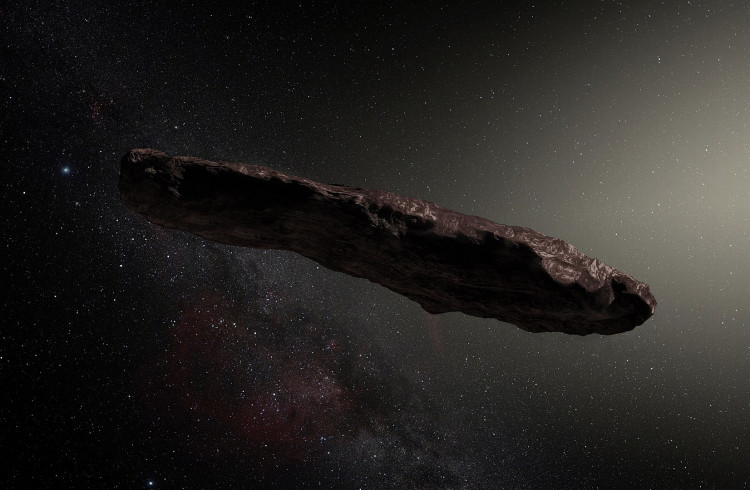The alien visitor 'Oumuamua has amazed and confused scientists ever since it drifted across our galactic neck of the woods. Now there is a new hypothesis that the space rock in cigar form might just be a dust bunny.
"Dust bunnies," here on Earth, are clusters of collected dust and dirt, held together by static energy, swirling under furniture, and moved by passing breezes. However, in a recent report, scientists say that 'Oumuamua, the first interstellar entity ever seen in our solar system, could essentially be a scaled-up dust bunny.
This research, headed by Jane Luu, an astronomer at the University of Oslo, Norway, reveals that the space rock may have formed from dust blown off a comet's nucleus outside of our solar system. This rock, an aggregate of cometary rock and dust, would be propelled by solar radiation across space and would ultimately take a brief tour of our solar system.
Since scientists found 'Oumuamua' in 2017, a number of hypotheses were proposed as to how the entity could have evolved while moving so rapidly through space. The hypotheses had to consider the unusual cigarette-like shape and high speed of 'Oumuamua at about 57,000 mph.
Researchers suggested that the asteroid could be solid hydrogen that transforms into gas and propels 'Oumuamua' as the rock approaches the star. Some scientists proposed that the object, which seemed cigar-like in fact, could actually be more disc-like. Others also doubted whether the rock was an artificial light sail created by an advanced alien race.
In the latest study, Luu and her colleagues proposed that a large chunk of rock may once have fallen off the nucleus of the comet and, when particles of dust and gas migrated away from the nucleus, they might bind themselves to the rocky fragment and ultimately form 'Oumuamua. The gas streaming away from the comet would gradually drive the dusty rock further into space over time, as the sample became larger.
The scientists suspect that the original comet was a long-term comet that takes a long time to orbit their stars and commute far from them. Because of the poor gravity of the planet the radiation pressure, the researchers think that the object split on a trajectory from its parent comet into interstellar space, eventually leading it on a short detour across our solar system.
It is important to detect new interstellar explorers, since 'Oumuamua's accelerated speed means scientists have only been able to study it in our solar system for a few weeks. By finding new objects, scientists could also see how they shaped in the manner suggested by Luu's team in the latest 'Oumuamua' study.
This research appears in the Astrophysical Journal Letters.






